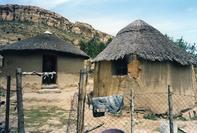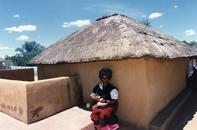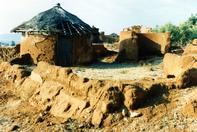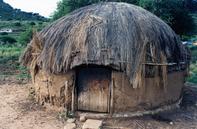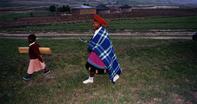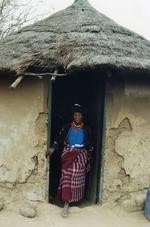
Rural Building Materials for Homesteads
In some areas, thatch is still the preferred method of roofing homesteads, mainly because it affords excellent insulation in all seasons.
Today, among some communities, aluminium sheeting is added to the bottom of the thatch to protect it from hungry goats and cows.
Because thatch is readily available in most rural areas, it is a comparatively cheap building material. But it requires considerable maintenance and, in areas where it is prone to being struck by lightning, thatch also poses a risk to life and property.
Different thatching techniques are used by different South African communities: in some areas, the thatch is packed very tightly, while in others it seems quite loose and even untidy. Likewise, because thatching grass is comparatively heavy, the depth of the thatch usually varies considerably depending on the thickness of a dwelling's walls.
Abandoned homesteads attest to the problems people face when they build using locally available materials. Unlike fired bricks, aluminium sheeting and other durable building materials, indigenous materials decay readily if left to the mercy of the elements.
Some Zulu-speaking people still occasionally build beehive structures. In contrast to other dwellings, they never have windows. Open doorways are therefore the only natural source of light in the generally dim interiors of these homesteads. Today, beehive structures are retained by some families in the belief that the ancestors are unable to recognize other types of dwellings.
Most Zulu-speaking families now live in circular homes like those found elsewhere in South Africa. Alternatively, they build rectangular dwellings similar to those first introduced by white settlers in the 19th century.
In contrast to the insulation that thatch affords throughout the year, the metal sheeting that is now used on the roofs of some dwellings not only traps the summer heat, but also fails to retain the heat generated by open fires in winter.
By
Professor Sandra Klopper
